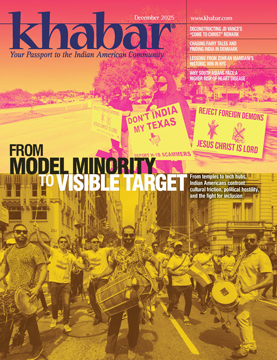Migration: South-South or South-North?/ Indian Americans on Trump, Biden, and Ties/ Book Matters.

MIGRATION: SOUTH-SOUTH OR SOUTH-NORTH?
Contrary to popular belief, most migration happens not from the Global South to the Global North but within the Global South. For instance, many Asian migrants end up in the Gulf nations. And it’s not just the working class. African and South American migrants are more likely to move to another country in their own region. Those who try to go to Europe or North America face greater obstacles, keeping their numbers relatively small. According to Stanford’s King Center on Global Development, 281 million people live outside their country of birth. Only three nations—India, China, and the U.S.—have more people within their borders. As for the Indian diaspora, whose population exceeds 35 million, it’s the world’s largest diaspora.
Even with all this migration, 96% of the world’s population doesn’t leave their native country.
About 70% of African migrants end up in other African nations. In fact, the Global South accounts for 40% of all international migrants. Most Syrian refugees went to Turkey and Lebanon, not Germany. Going by 2020 figures, there were 3.79 million Syrians in Turkey, accounting for 40% of the total. Colombia (not the U.S.) was the top destination for Venezuelans. If we add Peru and Chile, the three nations accounted for 60% of Venezuelan migrants. Then there’s the crisis in Sudan, which displaced 14 million people. As Lydia Polgreen of The New York Times points out, most of them fled to Chad, the Central African Republic, South Sudan, Egypt, Libya, and Ethiopia. “Vanishingly few have managed to reach Europe or North America,” she adds.
A third of the world’s migrants, mostly in the Global South, move between neighboring countries.
/|\ /| \ /|\ /| \
INDIAN AMERICANS ON TRUMP, BIDEN, AND TIES
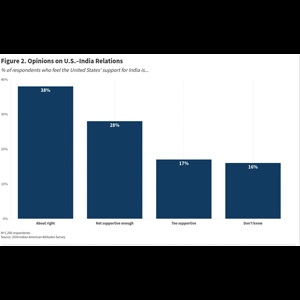
Roughly half the U.S., according to an Emerson College poll from last month, thinks we’re heading in the wrong direction. Other polling shows that, in the era of Trump 2.0, the nation’s prospects are worse. But Republicans, unsurprisingly, are much more optimistic than Democrats, with a YouGov/The Economist poll revealing a huge gap between the two parties. While 70% of Republicans thought the nation was moving in the right direction, only 11% of Democrats agreed. Independents were in the middle, with 56% saying the country was heading in the wrong direction. Only 26% disagreed. What about Indian Americans? Given their political affiliation, they’re bound to feel more like Democrats than Republicans or even independents.
Indian Americans are also concerned about India-U.S. relations, a survey reveals. An analysis of the Indian American Attitudes Survey (IAAS), conducted in 2024 by the Carnegie Endowment for International Peace, was released last month. Only 38% thought the U.S. support for India about right, while 28% felt it wasn’t supportive enough. Overall, they approved Biden’s handling of U.S.-India relations, with 31% showing strong approval. Only 12% strongly disapproved. While 34% thought Biden did a better job than Trump did in his first term, 28% thought the opposite. Indian Americans also give the Democratic Party (41%) more credit than the Republican Party (24%) in the smooth handling of India-U.S. relations. More Republicans (66%) thought Trump did a better job in handling U.S.-India relations, while 50% of Democrats thought Biden did a better job. In 2020, 36% of Indian Americans thought India under Modi was on the right track. In 2024, according to the survey, 47% thought India was on the right trajectory.
& & & & & & & & & &
BOOK MATTERS
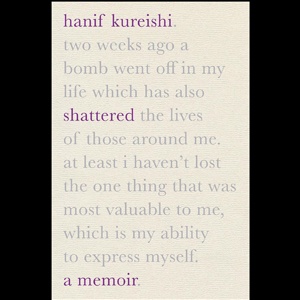
Shattered: A Memoir (Ecco), by Hanif Kureishi. Known for The Buddha of Suburbia and other works, novelist, screenwriter, and playwright Kureishi, who has won the PEN Pinter Prize among other honors, is well established in the literary world, especially in his native Britain. In 2022, while living in Rome, his life took a tragic turn. A fall left him paralyzed, requiring round-the-clock care for a year in a hospital. He is back in his London home, but a full recovery is far from assured. It’s an uncanny reminder of Salman Rushdie’s ordeal, although the circumstances were very different. Kureishi’s memoirs, a series of meditations in his trademark style, were dictated to family members from his bed. He dwells on his condition and the episode that changed everything in an instant, but he also talks about his wife and children, the writing that keeps him going, immigration, psychotherapy, even sex. “Hanif’s humor, talent, curiosity, clarity, and perversity—all are present and correct,” Zadie Smith notes, adding, “I loved it.”
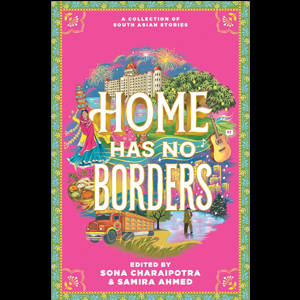
Home Has No Borders (HarperCollins), edited by Samira Ahmed and Sona Charaipotra. Here’s a new anthology whose list of contributors reads like a Who’s Who of South Asian authors of YA fiction. What’s not to like? It will be cherished by librarians, not just teens. Taking an unusual approach to contemporary explorations of cross-cultural issues involving families, school, home, and relationships, these inventive tales plunge into a rich fantasy world that encompasses South Asian myths, culture, religions, and history. “As short story collections go, this strong selection featuring South Asian characters is joyous and original,” according to School Library Journal. The contributors include Anuradha D. Rajurkar, Fatimah Asghar, Jasmin Kaur, Navdeep Singh Dhillon, Nikesh Shukla, Nisha Sharma, Rajani LaRocca, Samira Ahmed, Sheba Karim, Tanuja Desai Hidier, Sarah Mughal Rana, Tanya Boteju, Tashie Bhuiyan, Veera Hiranandani, Kanwalroop Singh, and Rekha Kuver.
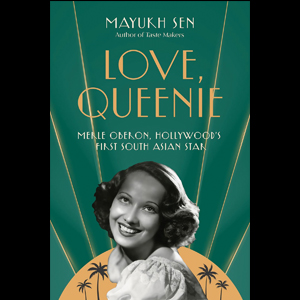
Love, Queenie: Merle Oberon, Hollywood’s First South Asian Star (Norton), by Mayukh Sen. Before Sabu made his mark as an actor, there was Queenie. But few knew that Queenie, or Merle Oberon, had a South Asian connection. Born in Bombay in 1911 to a Ceylonese mother and a white British father, Oberon made her film debut in 1933 and even won an Oscar nomination in 1936 for her role in The Dark Angel. While she couldn’t pass for white, her South Asian heritage was concealed to avoid prejudice and discrimination. Oberon’s real background would have made it impossible to make inroads in Hollywood back then. To account for her complexion, a story was made up that she grew up in the British colony of Tasmania. The truth came out only after her death in 1979. “A deeply sympathetic portrait of one of Hollywood’s most misunderstood figures,” says Katie Gee Salisbury. Sen, who won a James Beard Award, also wrote Taste Makers. He teaches journalism at New York University.
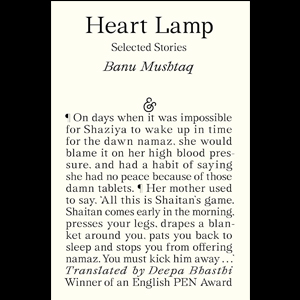
Heart Lamp: Selected Stories (And Other Stories), by Banu Mushtaq. Translated by Deepa Bhasthi. This collection of Kannada short fiction was longlisted for the 2025 International Booker Prize. And it won the PEN Translates Award. Mushtaq, an author and lawyer besides being a Karnataka-based social activist, focuses mostly on marginalized Muslim women and girls in these 12 stories. She’s a founding member of the Bandaya Sahitya Sanghatane, also known as the Rebel Literary Movement. The International Booker Prize, launched in 2004 as a biannual award for translated fiction, is now a yearly prize worth 5,000 pounds. The prize is divided equally between the author and the translator. Geetanjali Shree’s Tomb of Sand won the 2022 International Booker Prize. This Hindi novel was translated into English by Daisy Rockwell, who also translated Shree’s Our City That Year, which was recently released by HarperVia.
Enjoyed reading Khabar magazine? Subscribe to Khabar and get a full digital copy of this Indian-American community magazine.
blog comments powered by Disqus




